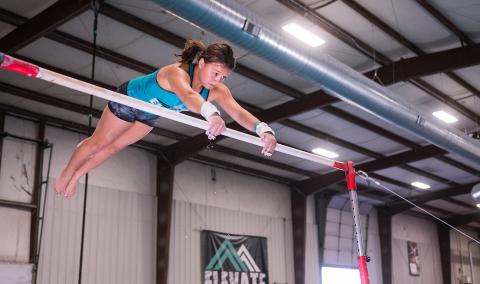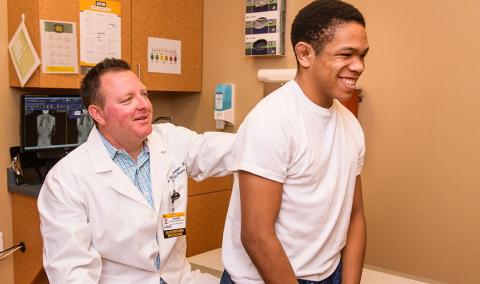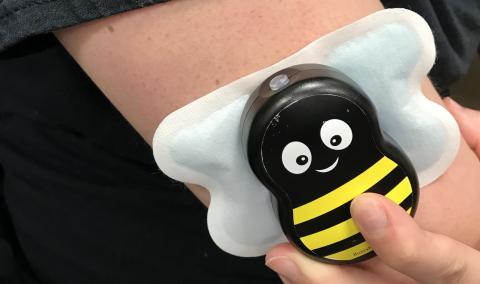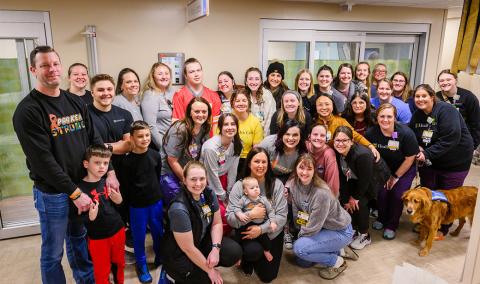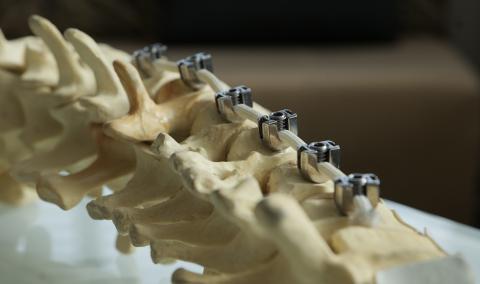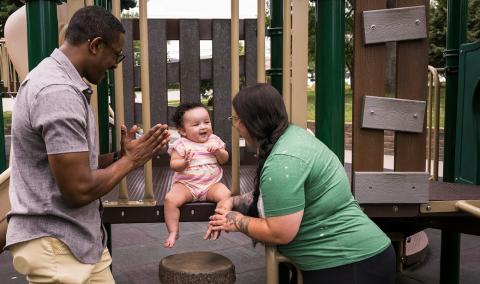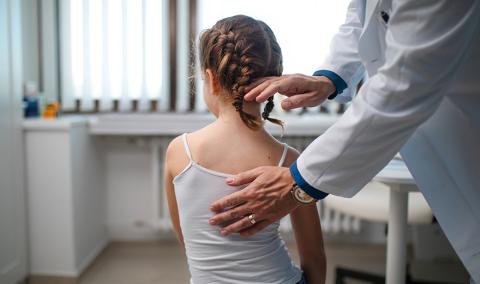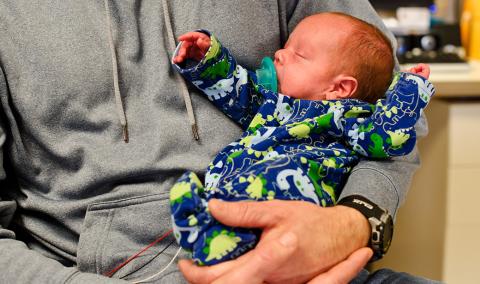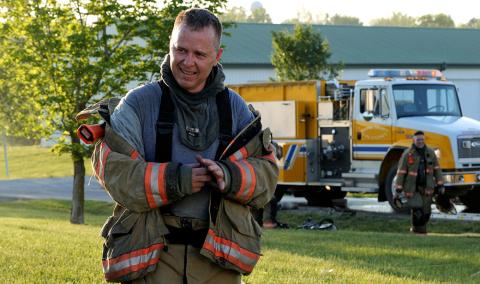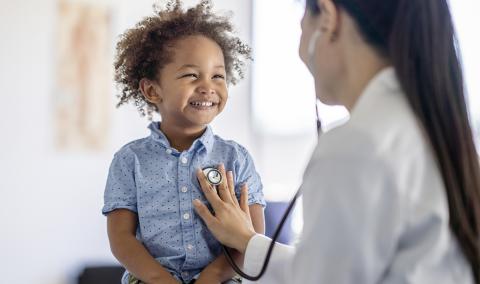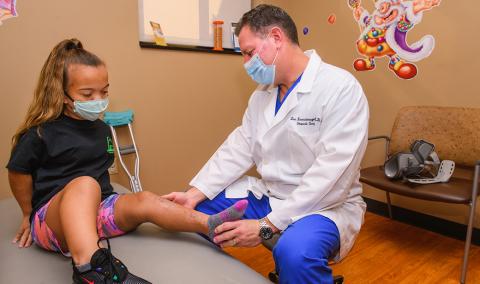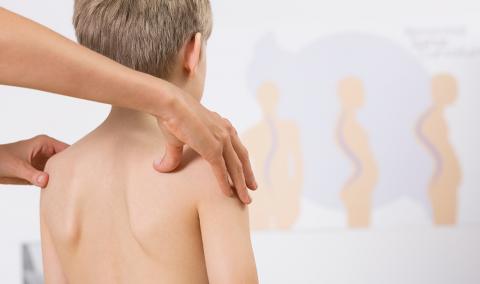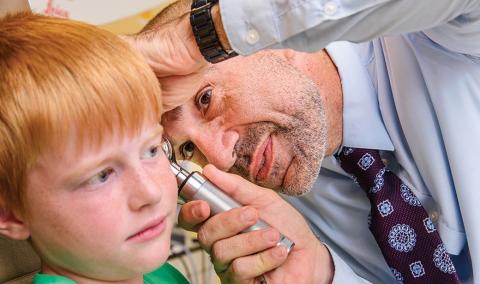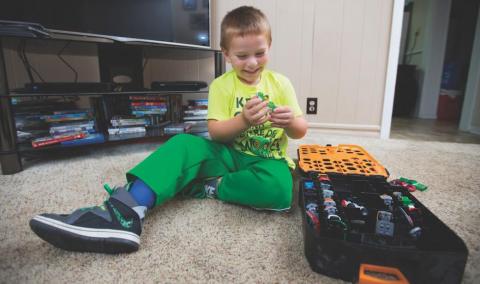Campomelic dysplasia is a rare form of bent-bone skeletal dysplasia that affects an estimated 1 in 40,000-200,000 people. It is complicated by breathing issues and has therefore historically been considered a lethal disease, with most individuals not surviving past infancy. With proper medical care and guidance, campomelic dysplasia can be managed.
If you have a child with campomelic dysplasia, you want him or her to receive comprehensive care from a team of experts. At University of Missouri Health Care, we are the region's experts in treating skeletal dysplasia diseases. We are actively involved with national research for treatments, and the leader of our team, Daniel Hoernschemeyer, MD, sits on the medical advisory board of the Little People of America so he can be actively involved with the issues affecting the health of skeletal dysplasia patients.
Campomelic CHARACTERISTICS
People with campomelic dysplasia often have a short stature, flat face, prominent eyes, an underdeveloped jaw, cleft palate, clubfoot, spine deformities, leg alignment issues. Other common orthopaedic characteristics include bowed legs, abnormalities of the hip and elbow joints and instability of the upper spine. Respiratory problems pose a significant risk to newborns and infants with the condition.
Campomelic DIAGNOSIS AND TREATMENT
Campomelic dysplasia is caused by mutations in the SOX9 gene and it can be detecting using radiological techniques, physical exams and genetic testing. Routine ultrasound can detect the presence of shortened limbs during pregnancy, but a formal diagnosis should be made after birth.
There is no cure for campomelic dysplasia, but some of its orthopaedic characteristics — including cleft palate and clubfoot — are correctable. A respiratory evaluation should be performed once the infant is older than four weeks and should include polysomnography to check for sleep apnea (central and obstructive) and a bronchoscopy to look at the airways. Treatment for respiratory symptoms may include supplemental oxygen, CPAP or BiPAP machines, tracheostomy and long-term ventilator support.
RESOURCES FOR FAMILIES
Related Conditions & Treatments
- Adolescent Medicine
- Chest Wall Deformities
- Down Syndrome
- Emergency Care for Kids
- Gastrostomy and Feeding Access Program
- Hyperbaric Oxygen Therapy
- Juvenile Diabetes
- Neonatology
- Pediatric Anesthesiology
- Pediatric Cancer
- Pectus Carinatum
- Pectus Excavatum
- Pediatric Cardiology
- Pediatric Dermatology
- Pediatric Development and Behavior
- Pediatric ENT (Ear, Nose and Throat)
- Pediatric Epilepsy
- Pediatric Eye Care
- Pediatric Gastroenterology
- Pediatric Infectious Diseases
- Pediatric Inpatient Rehabilitation
- Pediatric Nephrology
- Pediatric Neurology
- Pediatric Neurosurgery
- Pediatric Orthopaedics
- Pediatric Plastic Surgery
- Pediatric Primary Care
- Pediatric Psychiatry
- Pediatric Pulmonary Medicine
- Pediatric Sleep Medicine
- Pediatric Surgery
- Pediatric Surgical Services
- Pediatric Urology
- Pediatric Vascular Anomalies
- Pediatric Weight Management
- Sickle Cell Disease
- Aerodigestive Program



